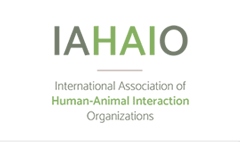Abstract
Equine-assisted learning (EAL) may improve the health of older adults, but scientific data are sparse. This study investigated whether people aged 55 and older show increased heart rate variability (HRV) during EAL and awareness of bodily sensations that are overall pleasant. Subjects (n = 24) participated in mindful grooming during which they slowed their breathing and brushed a horse while noticing sensations in their body and watching the horse’s reactions. The subject’s and horse’s HRV were recorded simultaneously before, during, and after mindful grooming. For control, the same subjects performed mindful grooming with a plush simulation horse. During exit interviews, participants described their sensations. Words and gestures were categorized as positive, neutral, or negative. During mindful grooming, human heart rate and HRV (standard deviation of interbeat interval, SDRR) increased compared to baseline (paired t-test, t = –4.228, p < 0.001; t = –3.814, p = 0.001), as did the percent very low frequency (%VLF) component of HRV (t = –4.274, p < 0.001). Equine HRV values remained in the normal range, mostly VLF. In 10 cases, during mindful grooming, horse and human HRVs showed matching VLF frequencies. Grooming the simulation horse significantly elevated SDRR but did not alter %VLF. Exit interviews revealed significantly more positive gestures (t = –3.814, p = 0.031) and fewer negative gestures (Wilcoxon signed-rank test, Z-statistic = –2.12, p = 0.036, p < 0.05) when participants spoke about the real horse compared to the simulation. These findings demonstrate that during mindful grooming people aged 55 and older benefit by experiencing increased HRV, heightened awareness of pleasant bodily sensations, and often some synchronization of their HRV frequency spectrum with that of their horse, possibly reflecting emotional bonding.
Recommended Citation
Baldwin, Ann L.; Walters, Lisa; Rector, Barbara K.; and Alden, Ann C.
(2023)
"Effects of Equine Interaction on Mutual Autonomic Nervous System Responses and Interoception in a Learning Program for Older Adults,"
People and Animals: The International Journal of Research and Practice: Vol. 6
:
Iss.
1,
Article 3.
Available at:
https://docs.lib.purdue.edu/paij/vol6/iss1/3
Included in
Alternative and Complementary Medicine Commons, Social and Behavioral Sciences Commons, Systems and Integrative Physiology Commons


